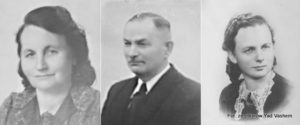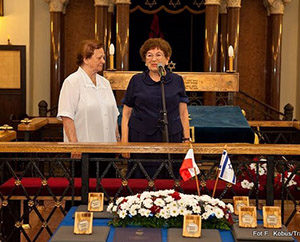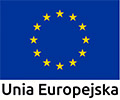The Righteous from the Treblinka area – the Kasprzak family

The Kasprzak family, who lived in Sokołów Podlaski during the war, was awarded the medal of the Righteous Among the Nations.
Stanisława and Roman Kasprzak and their daughter Zofia are other people connected with Sokołów Podlaski, who were awarded the medal of the Righteous Among the Nations by the Yad Vashem Institute. During the German occupation they hid a Jewish girl in their house. It was little Rita Skowrońska, whose visible Semitic features would not allow her to function outside the ghetto walls.
Abandoned in the ghetto
In July 1941, a child abandoned by its parents was found at the gate of the Sokołów ghetto. The child was to be sent to a Polish family who lived in one of the nearby villages. The family promised to take care of the girl. They received a substantial payment for this favour. However, these people were scared of the great responsibility and risk that hiding a Jewish child entailed. They gave up taking care of Rita and took her back to the ghetto. As she remembers years later, she was wearing only a summer dress and sandals. It was her only clothing. As it soon turned out, her parents were no longer in the ghetto. They fled to the so-called Aryan side. This way, they also wanted to take care of their safety and wait for this difficult period in a safe hiding place.
New family
Luckily, 6-year-old Rita managed to find another family in the ghetto. Its members earned their living by baking cookies. One of the cousins sold them to a pastry shop, where Zofia Kasprzakówna, who was 17 at the time, worked. The boy told her about the difficult fate of little Rita. Abandoned by her guardians, she had little chance of survival. Zofia decided to help her without hesitation. She convinced her parents Stanisława and Roman Kasprzak to do this. The new family warmly welcomed little Rita. Since then she was called Krysia. The decision of the Kasprzaks can be admired, considering their difficult housing situation. Apart from the parents, there were four of their own children – two sons and two daughters – in a one-room apartment. Stanisław worked as an engineer in the construction of roads and bridges. His salary was barely enough to feed the whole family. Despite this, they warmly welcomed their new “daughter” and tried to make up for her difficult life in the ghetto.
Continuing threat
Rita could not have the freedom that the other family members had. When a stranger came home, the girl had to go down to a special hiding place under the floorboards. She was never allowed to go outside during the whole period of her stay in the house. It was all because of her characteristic Semitic features. She would be recognised immediately. This would pose a huge threat not only to her, but also to the Kasprzaks. Zofia taught her to read and write. She also played with a girl who was often bore. This way more than 3 years passed to the Kasprzak family. Rita became very attached to her new family. She treated Roman and Stanisława as her own parents. Zofia was her beloved older sister.
A medal was awarded
 After the war it turned out that only Rita’s mother survived the Holocaust. The woman returned to Sokołów to retrieve her daughter. In 1948, they both emigrated to France and from there to Israel. Stanisława Kasprzak died in 1965 and her husband Roman in 1983. Zofia got married and left for Poznań. The Skowrońskis maintained contact with the Kasprzak family for many years. This changed in the 1980s, when the letters stopped coming. In 1989 Rita – now, Prof. Ruth Letan – travelled to Poland and was able to track down Zofia, who now bears the name Bublik. In 2008, Rita applied to the Yad Vashem Institute for awarding her rescuers with the title of the Righteous Among the Nations. On 10 September 2009, Zofia received the medal together with her diploma at the Nożyk Synagogue in Warsaw.
After the war it turned out that only Rita’s mother survived the Holocaust. The woman returned to Sokołów to retrieve her daughter. In 1948, they both emigrated to France and from there to Israel. Stanisława Kasprzak died in 1965 and her husband Roman in 1983. Zofia got married and left for Poznań. The Skowrońskis maintained contact with the Kasprzak family for many years. This changed in the 1980s, when the letters stopped coming. In 1989 Rita – now, Prof. Ruth Letan – travelled to Poland and was able to track down Zofia, who now bears the name Bublik. In 2008, Rita applied to the Yad Vashem Institute for awarding her rescuers with the title of the Righteous Among the Nations. On 10 September 2009, Zofia received the medal together with her diploma at the Nożyk Synagogue in Warsaw.
Prepared by Katarzyna Markusz, Życie Siedleckie, No. 42/2009 dated 16.10. 2009.





